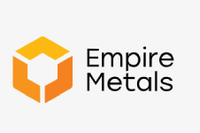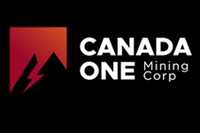Gianni Kovacevic: I Don’t Lose Sleep Over Copper Demand

“I believe demand is going to be there because of this overall arching trend of electrification,” Kovacevic said at Mines and Money in Toronto.
Interview conducted by Priscila Barrera; article text by Scott Tibballs.
Speaking with the Investing News Network at Mines and Money in Toronto, Gianni Kovacevic, executive chairman of Copperbank Resources (CSE:CBK), waved away the trade war and said he isn’t losing any sleep over copper because investors are “scrambling for copper metal.”
Falling inventories are the indicator for that demand, said Kovacevic, who added that the tricky side of the copper story is supply. With 100-year-old mines in copper powerhouse Chile, “we’re going to have to rely on other jurisdictions” to ramp up copper production to meet increasing demand. However, “there’s not that many out there,” he said, pointing to the US as an attractive alternative.
Kovacevic also talked about what type of copper project he likes the most, and praised the US thanks to lower taxes and mining locations “where the worker can go home at the end of the day.”
Scroll down to read the whole interview with Kovacevic. You can also click here to view our full Mines and Money Americas interview playlist on YouTube.
INN: It’s been an interesting year for base metals in general and particularly for copper. What are some of the most important trends you’ve seen in the copper sector this year, and have any of them surprised you?
GK: Well, the overarching theme is the trade war. Is this going to slow down the global economy? What will happen to China? How will this be resolved? That is clearly a page-one story.
Never invest in the story on page one. Invest in the story on page 16. What’s going on with the copper market? Are the prices falling 50, 60, 70 cents?
But at the same time, look at the inventories, they’ve collapsed. Global inventories on the three major exchanges, SHFE, LME, COMEX, are now about 450,000 tonnes. That happened at the same time the copper prices slipped, and if you look just recently, in the last two weeks, the premium for immediate physical delivery is skyrocketing in China. This is parabolic. So what’s going on?
I think the traders are involved at the margin and it’s making an impact. If you look at all that stuff coming together, it looks like it’s an interesting play on what should be the medium — even maybe the near term. All that’s going to get settled and you’re going to have to pay more for copper immediately and in the medium term.
So I’m pretty optimistic on that. That’s telling us what they think — the traders — about the global trade war. In the beginning it’s an easy trade, shorting, then you figure out how you’re going to position yourself. But then it’s back to business as usual and then all that has been settled.
INN: We’re here at Mines and Money in Toronto. You gave a presentation about the electrification of the world and you talked specifically about Latin America. What do you find most attractive about that region?
GK: Well, between Chile and Peru, that’s approximately 50 percent of primary copper production, a little bit less, but we really rely on that area. The biggest development jurisdiction has been Peru, so investors ask themselves, “well, if demand for copper is going to be par for the course, or maybe a little bit stronger than some people anticipate because of this electrification, can they just ramp it up?”
It’s going to be difficult. Now, we saw Codelco has announced an investment of $40 billion in the next decade and a half, and all that is sustaining capital, it’s infrastructure, it’s rehabilitating mines — a lot of the mines in Chile are old. These were discovered a hundred years ago.
So it’s not because of the metal yield, and we know that because falling grades, they’ve already invested tens of millions of dollars. But the metal yield, it’s still coming in at roughly 5.5 million tonnes out of Chile.
So we’re going to have to rely on other jurisdictions. But there’s not that many out there. They don’t talk about this in incumbent energy circles, and I think that will eventually become a very important page-one story that those global energy investors are going to start to appreciate more.
INN: Are there any specific copper projects that you like in the region or any countries that you like the most?
GK: Well, I like projects where the worker can go home at the end of the day. If you’re looking at a future mine that has a billion tonnes, that means it would operate if it was in production for 40 or 50 years. These mines at elevation in Peru and Chile, you have to pay for the workers to go in and out, every week or every second week, and you house them in comfortable conditions with linen and warm meals and what happens? It’s fine, you should be — people are pretty comfortable — but this is an operating cost forever, for 40 or 50 years.
If you could be in a place where everyone goes home at the end of the day, well, that’s important. I talked about Arizona, Nevada, Alaska — places like that. I really like the US because of the lower tax rate that they have there, 21 percent. That’s yet to be factored in a lot of economic studies.
You look at the workforce, the location, the culture of copper mining. When you leave Peru or Chile, it’s picked over — there’s not a lot of places you can go anymore, the Central African area, you’ve got Kazakhstan, Russia, Poland, you’ve got to come back over to the US.
INN: What can investors expect next year in terms of the copper market and how copper will perform? What should they pay attention to?
GK: The report card is the copper price. No matter what anyone says. Bottom line is, today is October 15, it’s trading at US$2.84. If you show me that inventories collapse, just like a ski slope, just go look at the combined SHFE, LME, COMEX inventory levels. That tells me people are scrambling for copper metal.
I lose no sleep at night on demand. I believe demand is going to be there because of this overall arching trend of electrification. To recap, only 19 percent of final energy is electrification today. It took us 120 years to get there. And the next 40 to 50 years, this is going to 50 or 60 percent. This is going to triple. But the per-copper amplitude of each megawatt of that type of electricity is more deluxe, takes more copper. So I lose no sleep at night over demand.
Supply is the tricky one. By the way, disruptions since 2004, this year we had the lowest amount of disruptions because of strikes or pit collapses or acts of God or what have you, than any other year. So the average is 5.7 to 5.8 percent a year of disruptions, this year it’s 1.9 percent. I don’t think that’s going to happen again next year, but we’ll see as the year continues.
INN: And my final question for you today is how is Copperbank positioning itself to take advantage of this copper revolution we’ve talked a little about? What’s ahead for the company?
GK: Well, we’re binaries to when the market sentiment is low, and we’ve seen that it came to all-time lows during the trade war this summer. During the summer we bought another project, we continued to buy projects in negative time.
So I am a contrarian investor. I basically buy from pessimists and I aim to sell to optimists. What we’re paying for these projects traditionally and now contemporarily speaking is less than one-fifth of a penny per established pound in the ground. Now, we have various categories, and people have to look at it and they have to scrutinize that because we have measured, indicated, inferred and we have reserves.
But generally speaking, when it costs 4 cents to delineate a pound and we can acquire it in the market, that’s what people need to look at with Copperbank.
In the last move in the copper price, it went up 50 percent, our share price moved 400 percent. So that’s what people need to look at.
Where’s the copper price going and does our strategy indeed offer optionality, growth, development and momentum. It’s not just an optionality plan, so follow the tape and our report card is our share price. So let’s see: when the copper price moves what will Copperbank do to coincide with that.
Don’t forget to follow us @INN_Resource for real-time news updates!
Securities Disclosure: Priscila Barrera and Scott Tibballs hold no direct investment interest in any company mentioned in this article.
Editorial Disclosure: The Investing News Network does not guarantee the accuracy or thoroughness of the information reported in contributed article. The opinions expressed in these interviews do not reflect the opinions of the Investing News Network and do not constitute investment advice. All readers are encouraged to perform their own due diligence.




